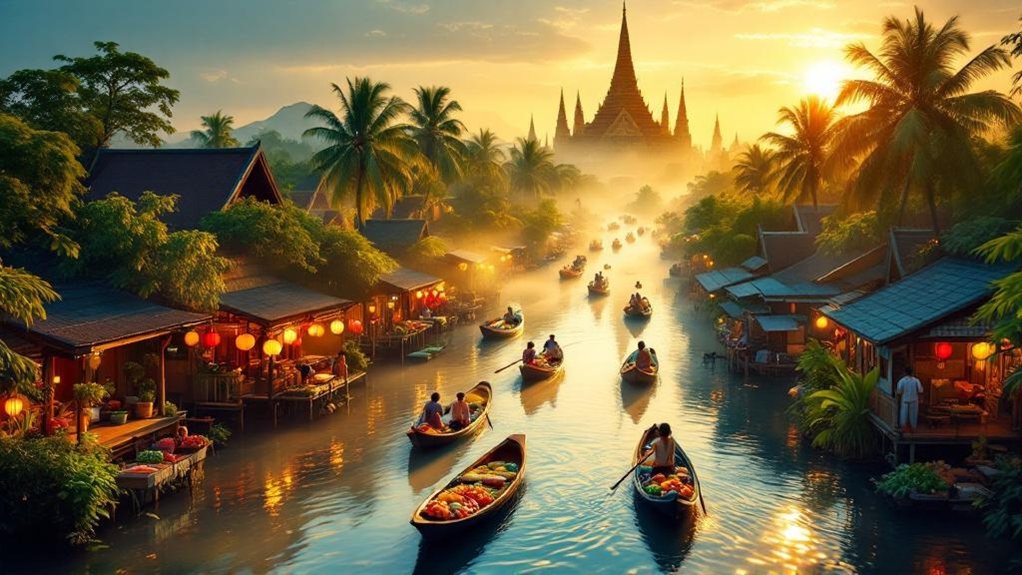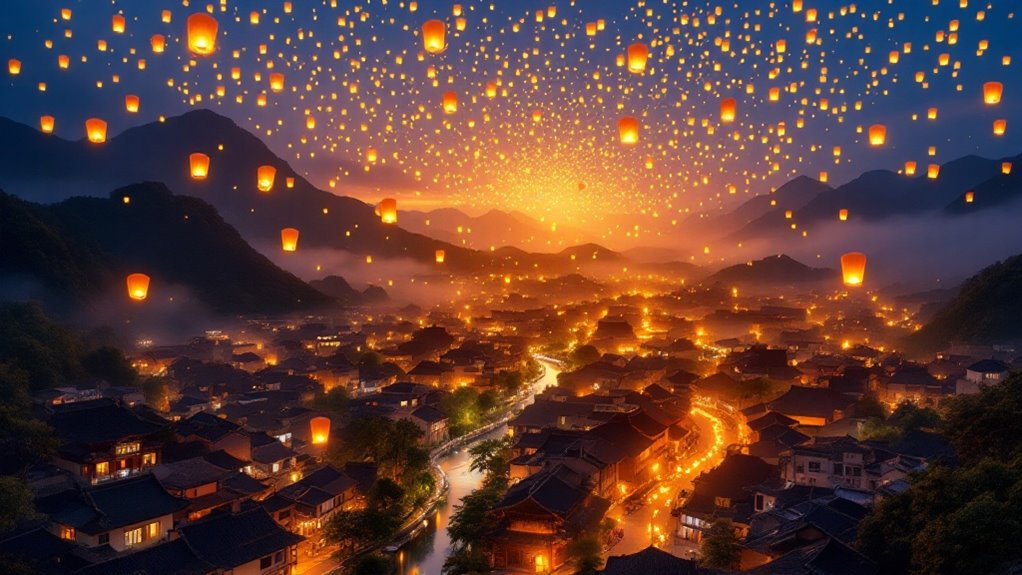Thailand’s cultural prominence stems from its remarkable ethnic diversity, widespread Buddhist traditions, and a strong national identity encapsulated in “Thainess,” which emphasizes unique customs and social values. Government initiatives actively promote Thai cuisine, films, and festivals, amplifying global recognition. The country’s aging but interconnected population, historic sites like Ayutthaya, and creative exports distinguish Thailand from neighboring nations. Continued exploration will reveal how these elements interplay to elevate Thailand’s culture and creative output on the world stage.
Although shaped by centuries of interaction with neighboring and distant civilizations, Thailand’s culture and creativity remain distinctly rooted in its own diverse heritage. The country is home to approximately 70 ethnic groups, including 62 officially recognized ethnolinguistic communities, resulting in a complex demographic profile. The Central Thai group forms the largest ethnoregional community at 34.1% of the population, while ethnic Thai account for about 75% overall. Thai Chinese represent roughly 14%, and Malays comprise around 3%, with additional minorities such as hill tribes, Khmers, and Mons contributing further to the country’s diversity.
Substantial intermixing, particularly between Thai and Chinese populations, has led to a high prevalence of Chinese ancestry, though many individuals identify as ethnically Thai. Demographic shifts, such as the rising proportion of individuals aged 60 and older—from 14% in 2016 to an anticipated 21% by 2025—are influencing cultural preservation and social dynamics. [The average household size in Thailand has steadily declined over the decades, falling from 5.7 in 1970 to just 3.2 in 2010, which reflects changing family structures and broader population trends.]
Buddhism, practiced in over 40,000 temples across the country, serves as the dominant spiritual and cultural influence, shaping customs, festivals, and community life. However, animist beliefs and folk traditions also persist, blending with Buddhist practices to create a distinctive cultural amalgam. Thailand’s pluralistic landscape includes adherents of Islam, Christianity, and other faiths, further enriching its cultural fabric.
Historical exchanges with Indian, Chinese, Japanese, Khmer, Portuguese, and Persian cultures have left deep imprints on Thai art, architecture, and societal norms. The ancient city of Ayutthaya exemplified Thailand’s historic role as a regional trade hub and center of cross-cultural interaction.
The concept of “Thainess,” encapsulating unique language, customs, and social values such as respect, self-control, and non-confrontation, underpins national identity. Core cultural values like sanuk (joyfulness) and a relaxed approach to life are evident in daily interactions and major festivals, especially Songkran and Loy Krathong, which reinforce communal bonds and attract international attention.
Through targeted cultural export policies promoting food, films, fashion, Muay Thai, and festivals, Thailand’s creative outputs have achieved significant global influence, distinguishing its cultural landscape from regional neighbors.






